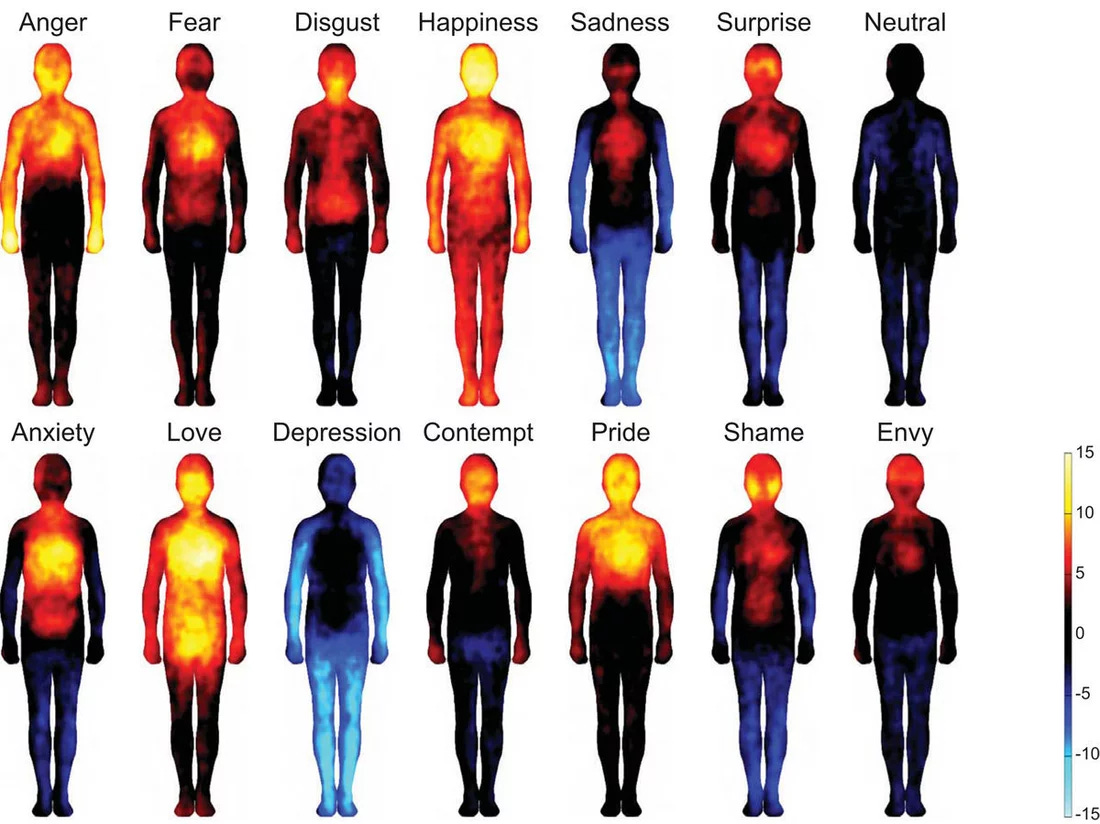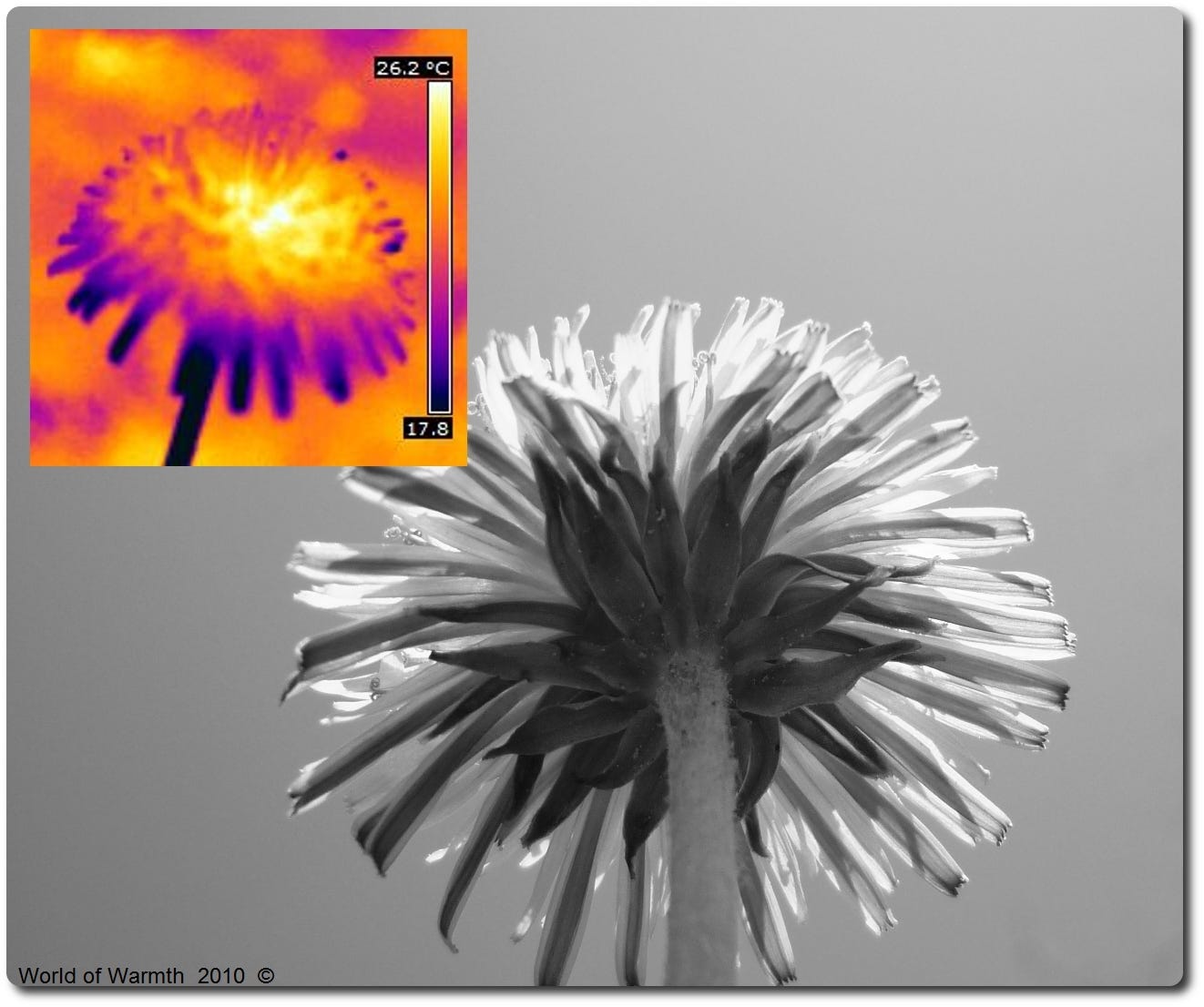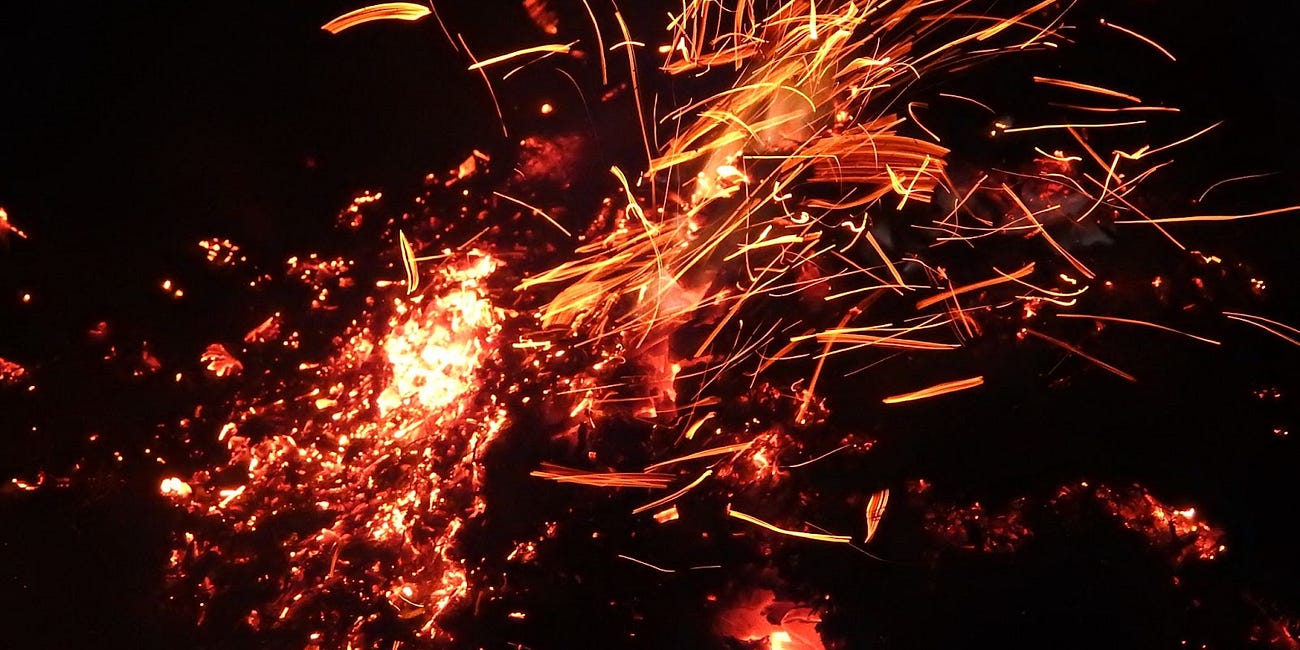“I change my mind a lot… I don’t usually agree with what I say very much.”1 - David Bowie
“Even the seemingly most unappealing thing has hidden qualities that are revealed when we do not simply yield to our own selfish feeling.”2 - Rudolf Steiner
Read Part 1 here.
Dead Warmth & Living Warmth (Part 1 of 5)
Have you ever been outside when it’s cold and then opened the door to a warm house? A torrent of warm, turbulent air rushes out, and another current of cold air moves inside. Our family perhaps yells at us to close the door as we stomp off the snow on our boots. When the door closes, the exchange of hot and cold becomes restricted.
Thank you for being an active supporter of biodynamics and the Josephine Porter Institute. Most of the articles that are sent out on this platform are free to all. After a few weeks, the archives go behind a paywall, but anyone with financial needs is not turned away. What we produce is for all. Those of you who pay to subscribe to us have full access to our extensive archives and you can join the conversation in the comments below. Becoming a paid subscriber helps JPI in enormous ways, helping cover operating costs as well as scholarships and more. It costs less than 27 cents per day. For a limited time, we are offering the ability to lock in 10% discount forever for anyone who chooses to upgrade to paid now. Thank you all. We can’t do this without you.
Living warmth always shows up precisely where you wouldn’t expect it. Aldous Huxley says, “Consistency is contrary to nature, contrary to life. The only completely consistent people are the dead.” Any living thing — including a movement — that becomes entirely uniform is like a plant entombed in amber — something that cannot change is a corpse. Mineral warmth consistently wishes to rise, though this gives even “mineral” warmth — warmth in a physical sense not being directed within a living organism — a certain kind of liveliness, for nothing, is completely dead. But there is another kind of warmth, a warmth within liveliness — distinguished from the mild liveliness of external warmth accumulated in rocks. Warmth within a living organism moves in astonishingly inconsistent ways.
The warmth of an electric heater radiates a mineral warmth, but the warmth of a good wood fire (or sunlight) gives a “health-giving warmth”3 because the breaking down of materials built by life radiates vitality, not just heat. You could say that food cooked over a wood fire increases the vitality in the food, whereas an electric heat certainly cooks the food but primarily in a breaking-down manner without adding more. This doesn’t mean we shouldn’t cook with electric heat — that’s all I use at our house — but we should be cognizant that the nutritional value of food is affected by the source of cooking warmth. In my case, we primarily eat what is grown on our biodynamic farm, so there’s no reason for me to worry, since my baseline food quality is far better than average. I consider anxiety about poor food quality to be rather more deleterious than poor food quality, which is why you will see many people on a bad diet, nonetheless quite content — and even healthy! — and even benevolent participants in society, while those most frantic about their food quality can often spread anxiety about bodily existence rather than working practically towards harmony. As freedom is meant to be sacrificed for what we love, health exists in order to be used to serve. Freedom and health are both means to an end, neither of which is meant to be amassed as if leaving a big bank account or a beautiful corpse was of any positive karmic value. If we are merely vaguely warm to others because we were around their own warmth, we cool off as soon as we are out of their spiritual sunlight. Our task is to take whatever we are given and transmute it into living warmth — surprising warmth.
My experience of a woodfire versus electric heat is that the electric heat warms the surface of the skin and gradually permeates deeper, but the woodfire simultaneously warms the skin and reaches deep into the bones, warming both from the outside and from the inside in a rejuvenating way. Whenever we’ve had chilled lambs on the farm, an electric blanket is not enough to revive them. We always have to build a fire in our woodstove. We also let our dog, Pippi, lick them maternally. When the lamb is finally up and walking, Pippi comes and finds us in the other room and alerts us with a single bark. She has done this for us with many little lambs over the years. She is old now, and it will be sad to see her go. You feel that? The contrast between the warmth of a dog reviving fragile lambs by the fire and then the cool feeling in the veins when you hear of an affectionate dog getting old. You can feel the surprising dynamics of living warmth right there. A rock always falls — you’ll almost never see it float, unless it’s carried by living water as Viktor Schauberger witnessed.4
Wherever there are materials that were built up by life breaking down — including in a compost pile — ethericity is radiating. Yet within a living being, within the etheric, the presence of warmth is witnessed as the wish to rise and radiate. This is no longer about bodily pleasure but becomes about inner uprightness. It is elevée, as Alan Chadwick might call it. Just as a plant grows between the earth and the cosmos, so does the etheric body, which grows between the physical world and the spiritual world. The impetus to move beyond mere comfortable vitality to a kind of blossoming is wakening to spiritual life.

Someone may be generous with their vital energy. Or they can be cold and stingy. Look at the image above and think about what it means when someone gets “cold feet” in the light of these emotional states. A compost pile assembled out of various etheric plants and manure can nonetheless produce spontaneous inner warmth. “The important thing is the generation of heat in the manure, for the activity thus called into play is highly beneficial to the manure.”5 It’s not enough to amass various experiences — those experiences must then be induced to heat up in a way that they generate inner warmth — so that inner kindling thenceforth absorbs vitality and always converts it into radiant warmth for others.
What is true on one level extends to higher realms, which is why we can begin with the dynamics of mineral warmth and step into the realm of the heart. The universe is a metaphor for something that cannot be conveyed in mere words: Love. Therefore, the key to the universe is found in living analogies. Inner warmth is enthusiasm born out of safeguarding rather than squandering our vital energy. Without first withdrawing at least some vitality inward, there is little fuel for the fire. An innervated etheric body has little basis for patient enthusiasm, just as an empty barrel cannot store up as much heat as a barrel filled with water. There is “thermal mass” in external water, but there is a kind of “thermal mass” within the etheric body, which is warmth within the living realm. We must both have a reservoir of vitality (as plants must not be placed into dead soil), and that ethericity must be exposed to a source of warmth it can accumulate in order to give it to the world. If we do not, so to speak, put ourselves in the way of grace, how can we expect to photosynthesize the gift of the heavens? If we are too busy for devotional practices, that is like saying we are too busy to move our plants from the shade into the light. But now that we have discussed inner and outer warmth, we should take a detour through a set of planetary processes, both of which belong (so to speak) to a warm and cold side of things.6
The “living warmth” introduced into the soil is a gift of enthusiasm — a willful desire to go forth and radiate. Mineral warmth does this, but it’s completely predictable. If you put your hand over a flame, warmth rises every single time. If you stand on asphalt in summer without shoes, your feet will get burned. But when it comes to human warmth, it is always unmerited, unsolicited, and precisely because it’s free (not dictated by external conditions) it shows up in places you couldn’t possibly have predicted it. It’s easy to predict resentful habitual behaviors — but it’s the warm moments that shock us because they are like an angelic intercession that breaks through our routines. Though we began talking of the dynamics of the four elements and their life within the mineral realm, the enhancement of warmth within the etheric must be drawn from the warmest aspect within a plant: flowers.
Even in flowers, we see a glimpse of a kind of mineral warmth still expressing itself within the living realm: mineral warmth rises predictably. Likewise, the human head should be warmest because of its location as the highest aspect of the physical body because mineral warmth naturally tends to rise. But in a living organism, warmth doesn’t simply obey mineral laws. It shows up where it “shouldn’t” be. The surprising centers of warmth — of disequilibrium — speak to its living quality within organisms. Living warmth emerges in lower centers than expected, and mineral warmth may then radiate upward naturally, but the fact that warmth is translocated against its own natural desire to move up and away tells you something stronger is at work: life. As we get to other medicinal plants or to higher organisms, warmth shows up in surprising places: it never simply goes “up” in a dead, predictable way within an organism but distributes itself with artful intentionality.
If someone is only warm towards what they subjectively like, they remain prisoners of their own prejudices. As Steiner writes in his foundational work Theosophy, “[I]f I allow my judgment and my behavior to depend on my own feelings of pleasure or sympathy, I allow my own idiosyncracies to take center stage and impose them on my surroundings. I want the world to include me just as I am, but I do not want to accept the world for what it is or to let it assert itself in accordance with the forces at work in it. In other words, I am tolerant of only what suits my own personality; I ward off anything else. And as long as we remain captives of the sense world, we are especially likely to ward off any non-sensory influences.”7 Without living this, it is impossible to develop a “personal relationship with manure and ways of manuring.” Steiner is explicitly asked about farming based on mere feeling:
QUESTION: Where large areas are to be manured should one simply go by one's feelings in judging of the number of cow-horns to be used.
ANSWER: I would not recommend this. In such cases one must use one's common sense. My advice would be this. First go by your feelings, and once you have obtained satisfactory results begin to tabulate them in figures which can then be used by other people.8
There is nothing more treacherous than feelings when they “remain captives of the sense world” because those feelings of value will only strive towards immediate sensual experience and “ward off any non-sensory experiences.” This is the heart of materialism: seeking only how the surfaces of things make me feel. Real living warmth doesn’t respond merely to pleasant sensual experiences with pleasantries but has the incredible ability to be warm in response to harshness. This is the logic of “turning the other cheek” — which is able to be generous and patient where neither are externally merited. Someone who is only kind to others when they are surrounded by beautiful things — or things the way they would prefer them — is not a kind person at all. Such a person has dead warmth by only being warm when moved into warm environments. The spiritual task is, quite the contrary, to bring warmth into unexpected situations — precisely where it is not owed. Our task is to become “sympathetic people in human society, who have a favorable influence by their mere presence and not by anything they say.”9 Such people do not offer warmth only when they get treated the way they want — no, they are radiant centers of unmerited graciousness. “For if you love those who love you, what reward have you? Do not even the tax collectors do the same? And if you salute only your brethren, what more are you doing than others?”10 Those who are only generous to those who are generous lack living warmth on a soul level.

In special plants, such as the allium family, warmth is very much a living process and doesn’t simply rise and radiate. The root of garlic is warmer than the upper aspects. What a remarkable thing! Warmth in garlic goes down, which is completely against the rules of the four elements. Warmth wishes to go up, so what makes it go down instead? The fact that warmth is carried within life which has its own agenda and performance to execute. Living warmth goes somewhere other than where mineral warmth would dictate. Living warmth is surprising because it feels unnecessary — it shows up where we wouldn’t expect it. And that’s why true generosity always feels surprising: there’s absolutely nothing that motivated it in external conditions. When someone is spontaneously generous and expects nothing in return, that is a kind of living warmth. This is why, in winter, we say that there is a “living” warmth within the Earth — because it’s a total surprise that the Earth would get warmer during the coldest time of year! When we have feelings of love or pride or shame, warmth is redistributed in a living way that does not at all merely rise up in a dead way.
“If you review the matter that on a day, shall we say, when the temperature reached sixty-eight, and you took a cucumber from the glass house and you put that same thermometer in the cucumber and left it there long enough, it would read about forty-eight. And if you took that same thermometer out of the cucumber, on that same day when the temperature outside was sixty-eight, and you put it amongst the roots of say, the wild arum lilies that were middle aged in growth, three years, it would read one hundred and twelve.”11
Wine creates a feeling of warmth throughout the organism and radiates out through the skin, a sort of artificial joy. Alcohol has the ability to redistribute warmth throughout the entire body in every which way. The result is that people quickly feel inspired — though the next day dispirited. Of course, this is not necessarily merited, and it is habit-forming precisely because it makes people feel joy without necessarily being drawn to the meaning of their lives and relationships. This is the danger of any stimulant: giving an unmerited feeling that would normally require hard work. The result tends to be callousness precisely because we cease to need others for our sense of private joy. Our truer self is not what people make us feel but what we evoke in others. If I think the point of my neighbors is making me feel good, then I am a bad neighbor. When we come to see the peaceful joy we give to others as the true sign of our character, then we are really beginning to love our neighbors as ourselves.
Fanning the Flame of Life with Biodynamics
Plants emerge from what once was inside the sun and return the same energy back to the cosmos. Their leaves unfold like etheric flames and culminate in seeds, which fly off like sparks and have the power to spread their green flames out of the hidden life within the soil. If we want our plants to burn brightly, we must nourish that inner fire correctly. Biodynamics offers a way to resurrect dead soil. In support of this, we are offering a limited-time
Part 3 coming soon…
David Bowie as quoted by Lance Olsen in Always Crashing in the Same Car (2023)
R. Steiner, Theosophy, pp. 182-183
R. Steiner, Agriculture, Lecture I (GA327, 7 June 1924, Koberwitz)
R. Steiner, Agriculture, Lecture V (GA327, 13 June 1924, Koberwitz)
If you’re paying close attention, you’ll notice there are different kinds of warmth, and I freely move from one level to the other — because the principle of warmth is the same whether it’s dynamic on a mineral level or dynamic on an etheric level. Warmth is warmth. The difference is whether it is dead mineral warmth that a stone contains or warmth contained and managed within a living etheric body. Warmth within the etheric body also produces mineral warmth. They are not so clearly distinguishable in practical life, because the etheric is here interpenetrating with the mineral world.
R. Steiner, Theosophy, pg. 182
R. Steiner, Agriculture Course, Lecture IV (GA327, 12 June 1924, Koberwitz)
R. Steiner, Agriculture Course, Lecture V (GA327, 13 June, 1924 Koberwitz)
Matthew 5: 46-47
Alan Chadwick, New Market, Virginia, September 11, 1979, Lecture 6, Fertilizations, Part 3 http://www.alan-chadwick.org/html%20pages/lectures/virginia_lectures/chadwick-lecture-virginia-6-3.html







